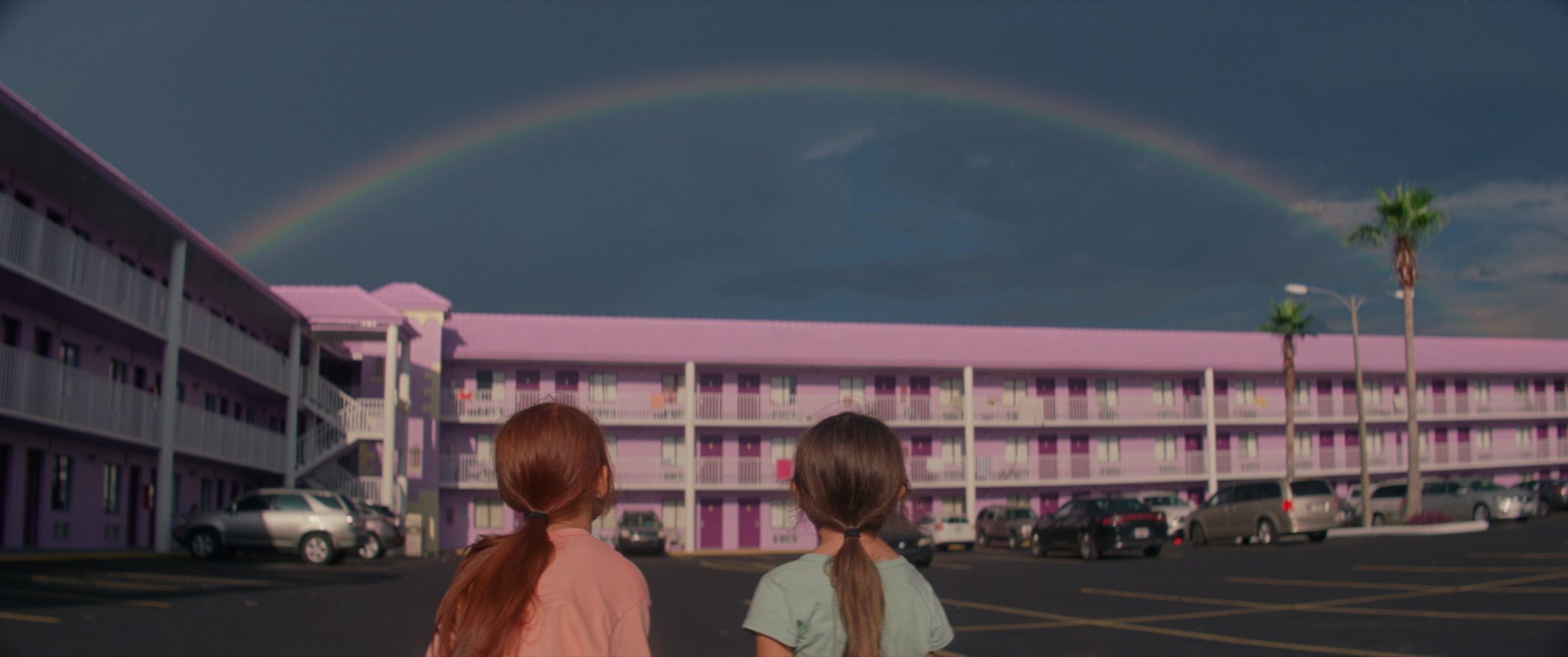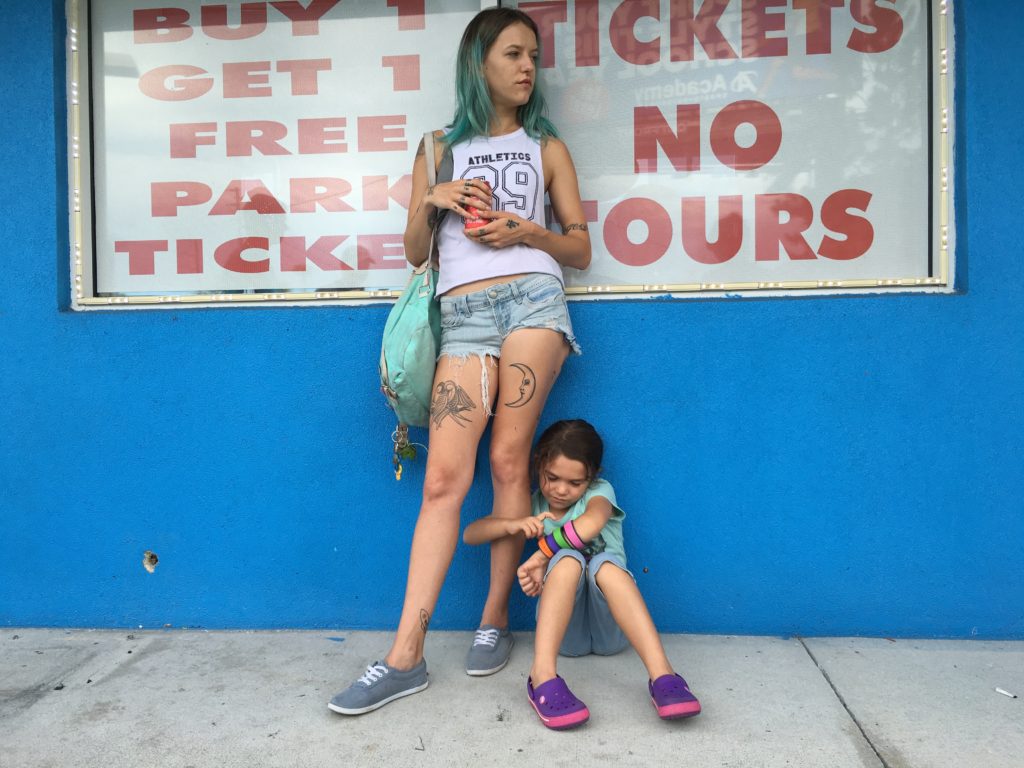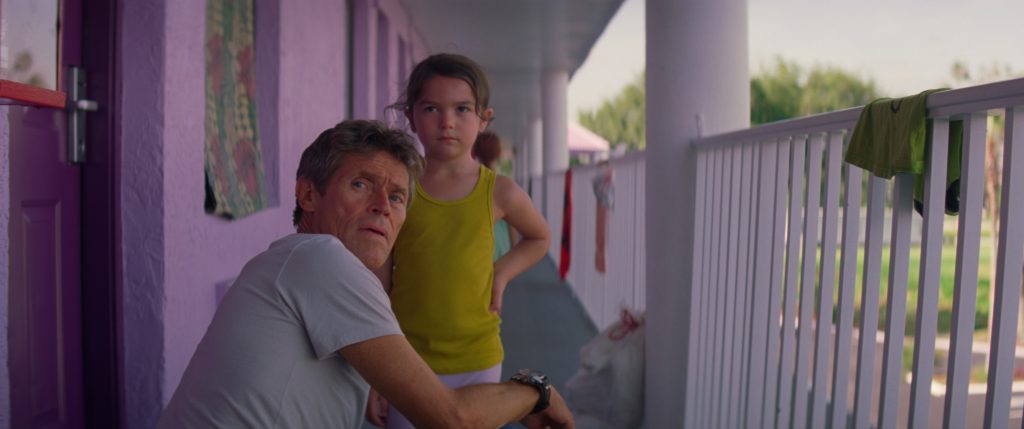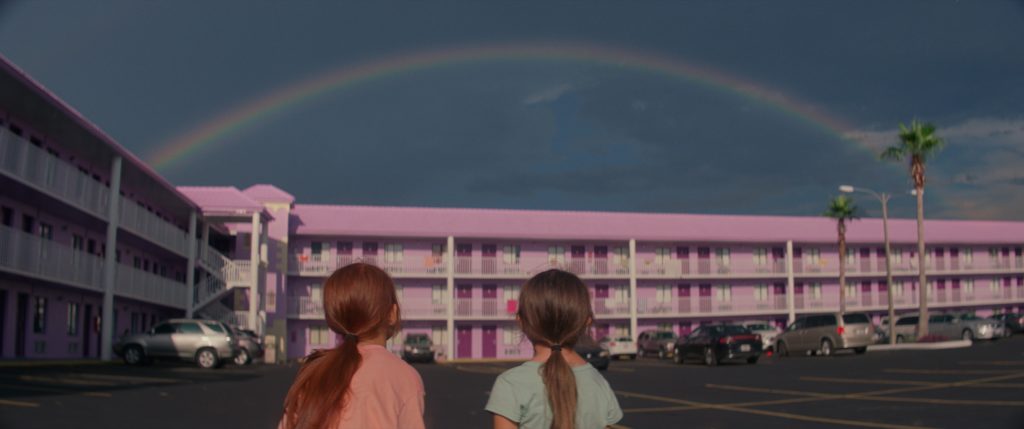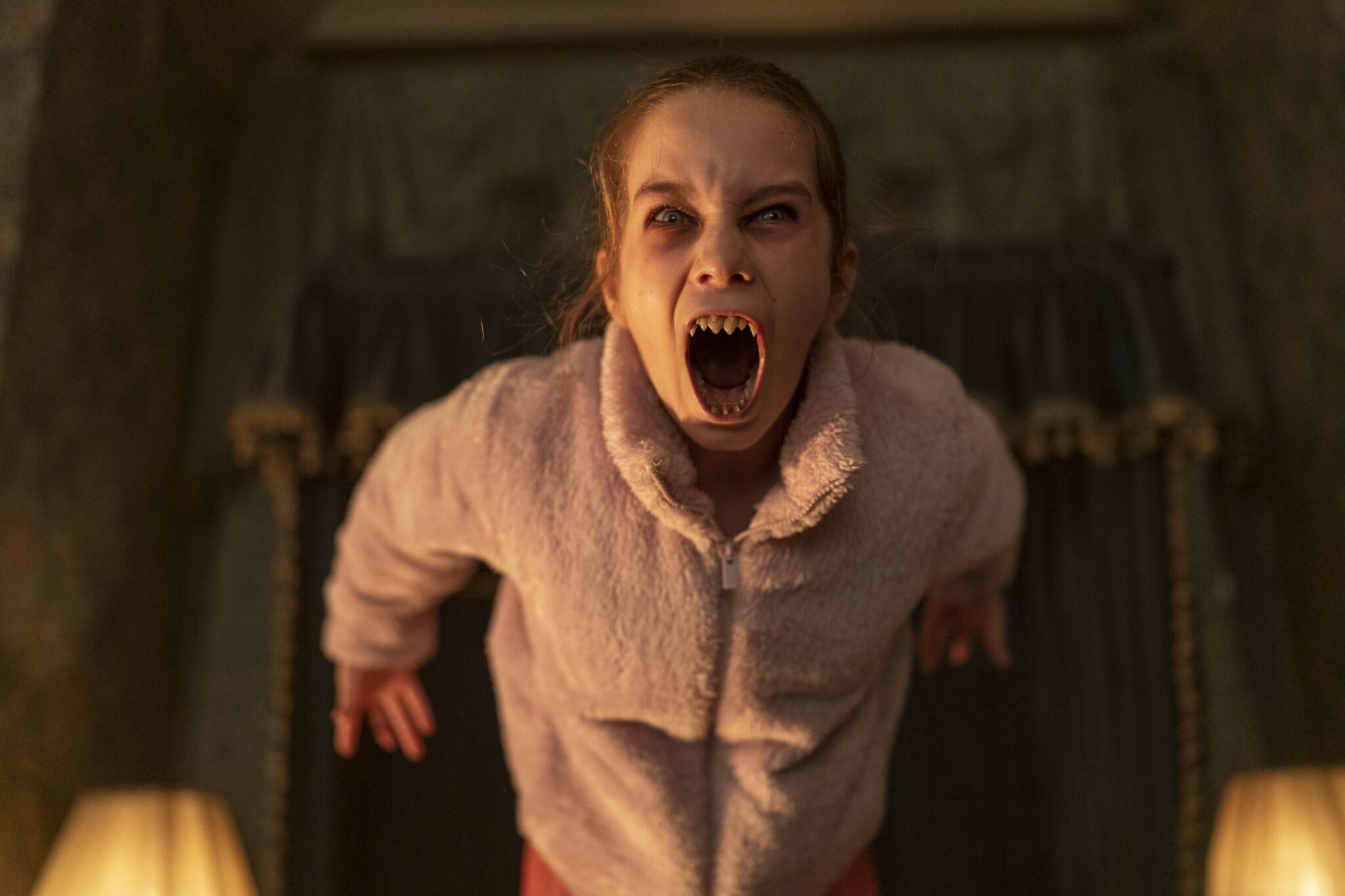The Florida Project is the story of a carefree childhood summer?except it isn?t. Instead it is a haunting view of a somewhat hidden section of American life?families that are not quite homeless, but nowhere near even a minimal security.
The story, which is made up of vignettes more than a definitive plot, focuses on Moonee (Brooklynn Prince), a six year old girl who lives with her mother Halley (Bria Vinaite) in The Magic Castle, a seedy $35-a-night motel near Walt Disney World. Halley is often late with her weekly rent, and is frequently admonished by motel manager Bobby (Willem Dafoe) for various transgressions. Moonee and friends spend the summer panhandling for ice cream, playing in abandoned buildings, and generally having adventures and getting into mischief. Her mother is little more than a child herself. She certainly is not emotionally mature. She tries to provide what she can through hustles, and, if that fails, prostitution and theft.
For Moonee this all seems normal. She has fun. She plays. But viewers know that it isn?t normal. It doesn?t seem to us to be a healthy situation for a girl to grow up in. At times Moonee and her friends do dangerous things because they have no supervision. Halley and other parents in their motel fear arrest or Child Services taking their children. We may think that is needed, but by the end of the film we may not be so sure.
The most interesting character for me, was Bobby. Often stern and seemingly judgmental, he was also an agent that brought grace into the lives of these people. He is an almost constant presence. He seems to see everything and know everything. He provides protection. Even when people fail to follow the rules, he almost never punishes. Theologically, I see him as a cinematic version of the Holy Spirit?the manifestation of God that constantly fills our lives with grace and continuously watches over us. The Spirit can both convict and comfort us. Bobby embodies all of this.
It?s estimated that close to a million people live in such transient circumstances. Because they must move so frequently it is hard to know with any certainty. Many of those living in places like The Magic Castle lost homes in the 2008 crash and have never been able find their way back into regular housing. It is especially hard to track the children of such families to make sure they are in good environments and have access to schools. Even we may want to be judgmental about such situations. We may see Halley as irresponsible and immature, but she is striving to keep her daughter housed and fed as best she can. This film calls us to have compassion on people like this who have next to nothing in a land of plenty.
Even though the film hardly ever specifically references the Disney resorts, they are a constant presence in the film as we see fancier hotels and tourist shops. Places like the Disney parks are a very visible sign of affluence in our society (especially considering the cost to go to them). The ironic contrast that is created by setting the story so close to such a happy place reminds us that this issue really is all around us. We may even consider the possibility that such ?magical? places really hide the poverty that exists nearby. We go to such places looking for a magical experience, blind to the reality of difficult lives just outside the boundaries of our escapist destinations.
Photos Courtesy of A24

